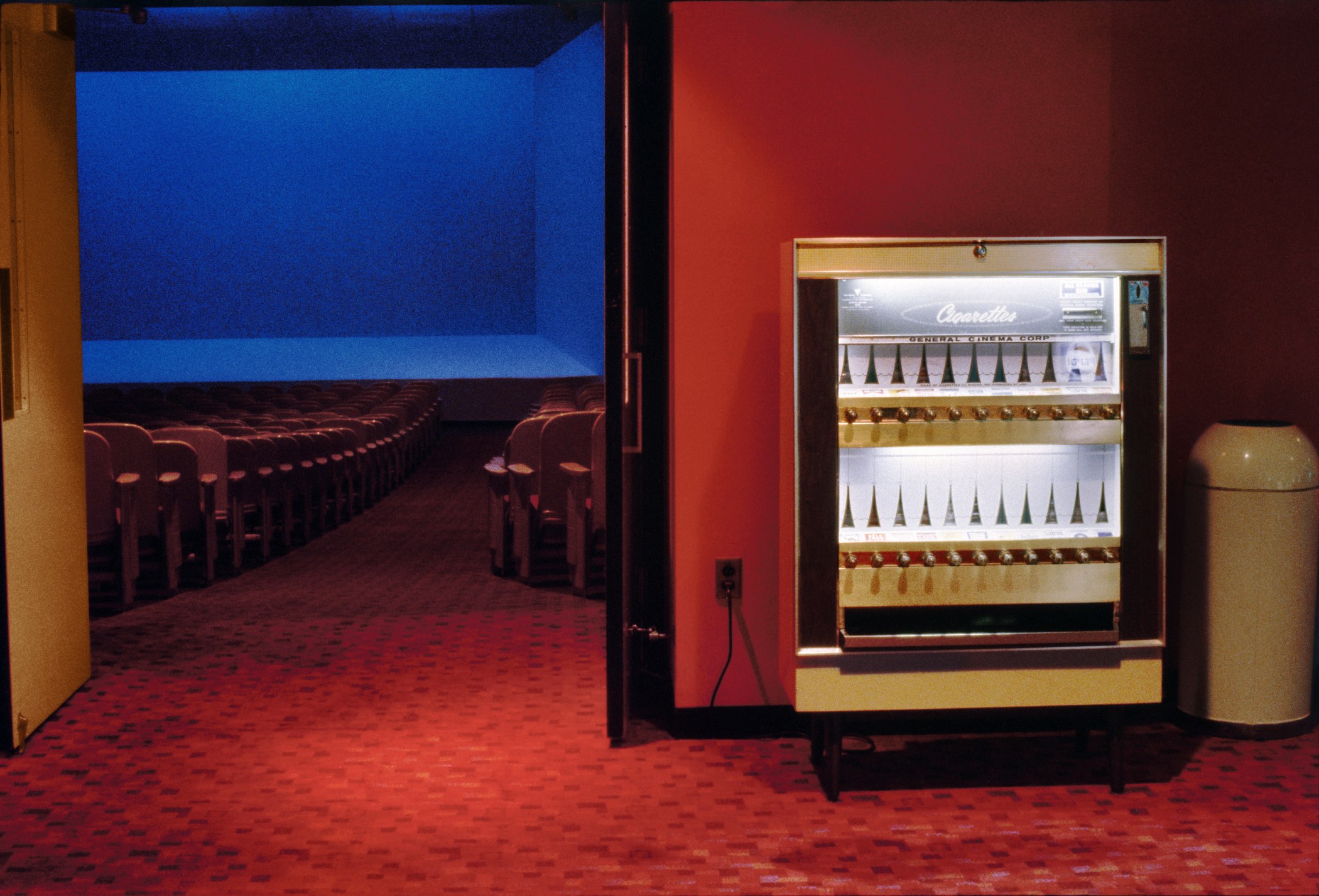Vintage shots of Boston’s red light district
- Text by Miss Rosen
- Photography by John Goodman

In the early 1970s, John Goodman set up his first photography studio on the edge of the ‘Combat Zone’, Boston’s official red-light district. The area got its name from the way it blended violence and vice, attracting soldiers and sailors on shore leave to its many strip clubs, brothels and porn theatres.
“The area was compressed, and the streets were full of people,” Goodman remembers. “It was edgy and unpredictable. Lit with neon, the ‘Zone’ always felt like it was night time. As a young photographer walking through the streets daily, I became part of its fabric, which gave me a certain access.”
It was the perfect training ground for Goodman, as a young photographer eager to delve into the gritty truths of the human condition.

John Goodman, Window #4, 1978.
Having studied with photographer Minor White, then a professor at MIT, Goodman learned the power of presence and awareness. “I attended classes and participated in a nine-month workshop that took place at his house every Saturday in Arlington,” he says. “Life at the house was disciplined, austere, quiet and intense. If it was your turn to wash the dishes then you were to totally focus on the task at hand; idle chatter was not part of the process; meals were silent.”
White showed Goodman how to find stillness in a chaotic world, and allow it to be his guide. “He taught me how to recognise something beyond what was just in front of my camera,” Goodman says. “Minor believed that the act of making an important photograph feels very much like an electrical impulse coursing through your body and heightening your awareness.”
As a young photographer, the street – particularly the Combat Zone –became the perfect environment for Goodman to discover his voice. “I became fascinated by the vibrancy of the city and intoxicated by a newfound freedom,” he says. “I came to understand the importance of establishing a connection with the subject while disappearing into the space.”

John Goodman, Stuart and Tremont Streets, 1974.
By the 1980s, Goodman had moved into an industrial loft where he could keep everything he produced, amassing a massive archive of his life as a photographer that sat untouched for nearly 30 years.
In 2009, he moved once more, and took this opportunity to peruse the work held in file cabinets that hadn’t been opened in decades. “I was startled and thrilled,” Goodman says of the moment he began to look at his early work. “My memory was re-awakened to the moment I made the photographs. So much came flooding back.”
Now, those long-lost photographs are on view in the John Goodman: not recent colour. “There is something in those places and faces that is relevant to today,” Goodman adds. “It is the recognition of our shared humanity. Although the look and make-up of the city has changed, people remain the same and the trials and tribulations that go along with being human remain constant.”

John Goodman, General Cinema, 1980.

John Goodman, Fenway Park, 1988.

John Goodman, Siegel Eggs / Haymarket, 1973.

John Goodman, Phone Booth, Truro, 1980.

John Goodman, Quincy Gas, 1973

John Goodman, Shop / Combat Zone, 1973

John Goodman, The Other Side / Bay Village, 1973.
John Goodman: not recent colour is on view at Addison Gallery of American Art in Andover, MA, through July 31, 2019.
Check out Huck 69 – The Hedonism Issue in the Huck Shop or subscribe to make sure you never miss another issue. Enjoyed this article? Like Huck on Facebook or follow us on Twitter.
You might like

Jake Hanrahan: “Boys can cry, but we don’t all fucking want to”
Hard Feelings — In the latest edition of our column on masculinity and fatherhood, Rob Kazandjian speaks to the conflict filmmaker-journalist and Popular Front founder about his childhood, the found family and community at his Muay Thai gym, and the “complete counterculture” of ‘no rules’ fighting.
Written by: Robert Kazandjian

Euphoric portraits of queer joy and resistance at Trans Pride Brighton
Let us piss — Now over a decade old, the event grew to become Europe’s largest trans pride march. In a year when trans rights have come under the microscope more than ever, we went to this year’s edition, finding grassroots unity and collective rage.
Written by: Ella Glossop

Remembering the radical anti-nuclear Greenham Women’s Peace Camp
Life at the Fence — In the early ’80s, a women’s only camp at an RAF site in Berkshire was formed to protest the threat of nuclear arms. Janine Wiedel’s new photobook revisits its anti-establishment setup and people.
Written by: Miss Rosen

A new documentary traces the rise, fall and cratering of VICE
VICE is broke — Streaming on MUBI, it’s presented by chef and filmmaker Eddie Huang, who previously hosted travel and food show Huang’s World for the millennial media giant.
Written by: Ella Glossop

Warm, tender photos of London’s amateur boxing scene
Where The Fire Went — Sana Badri’s new photobook captures the wider support networks and community spirit around the grassroots sport, as well as the significance of its competitions to the athletes who take part.
Written by: Isaac Muk

We are all Mia Khalifa
How humour, therapy and community help Huck's latest cover star control her narrative.
Written by: Alya Mooro

